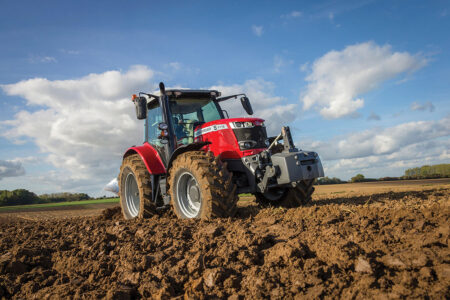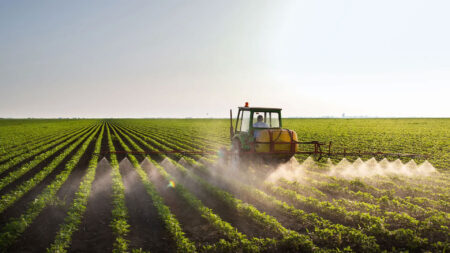All Good Ideas Have a Downside: Biofuels
The problem with fossil fuels is that they put carbon dioxide and other greenhouse gases into our atmosphere. To be clear, I am talking only about new carbon, not what is already on the surface of the planet, in the atmosphere, the biomass or the soil. Carbon is only detrimental when you bring it up from deep within the earth and add it to the carbon that is already here. That’s why biofuel is considered to be an environmentally friendly source of renewable energy. It is derived from carbon, that is already available and doesn’t add any new carbon to the atmosphere.
 Ethanol, with a few simple modifications to your engine, can be substituted for gasoline. It can be derived from many raw materials but is usually produced from corn or sugarcane. Since the carbon contained in corn and sugarcane is already here and available, ethanol doesn’t add any new carbon to the atmosphere. Plant fiber is made up primarily of carbon; so, to grow and produce biofuel these plants need to acquire carbon from their environment. A carbon dioxide molecule is composed of one carbon atom and two oxygen atoms (CO2). The green stuff in the leaves of growing plants is called chlorophyll. The plants get their carbon through a process called photosynthesis which involves sunlight, chlorophyll, and atmospheric CO2. In greatly simplified terms, the plant captures the carbon dioxide molecule from the air, keeps the carbon atom and uses it to build fiber for its own structure, and releases the two oxygen atoms into the atmosphere. When the corn or sugarcane plant is ready, we take it and turn it into ethanol. Cool, right? We get fuel for our cars and trucks and, at the same time enrich the earth’s atmosphere with oxygen. Well, not exactly. I must confess that I left out a few steps. Let’s have a look at how corn and sugarcane are grown.
Ethanol, with a few simple modifications to your engine, can be substituted for gasoline. It can be derived from many raw materials but is usually produced from corn or sugarcane. Since the carbon contained in corn and sugarcane is already here and available, ethanol doesn’t add any new carbon to the atmosphere. Plant fiber is made up primarily of carbon; so, to grow and produce biofuel these plants need to acquire carbon from their environment. A carbon dioxide molecule is composed of one carbon atom and two oxygen atoms (CO2). The green stuff in the leaves of growing plants is called chlorophyll. The plants get their carbon through a process called photosynthesis which involves sunlight, chlorophyll, and atmospheric CO2. In greatly simplified terms, the plant captures the carbon dioxide molecule from the air, keeps the carbon atom and uses it to build fiber for its own structure, and releases the two oxygen atoms into the atmosphere. When the corn or sugarcane plant is ready, we take it and turn it into ethanol. Cool, right? We get fuel for our cars and trucks and, at the same time enrich the earth’s atmosphere with oxygen. Well, not exactly. I must confess that I left out a few steps. Let’s have a look at how corn and sugarcane are grown.
 Many years ago, when I was still living in Colorado, my dad had a farm where he grew corn in rotation with other crops, and where he often put me to work. That has been more than 50 years ago and is the extent of my personal experience with farming corn. I have zero experience with farming sugarcane, so let’s talk about corn. There are certain basic things than haven’t changed. To begin with the land must be prepared using a tractor with a plow and/or a disc, and sometimes a large rake. Then the corn is planted using a machine called a planter that is pulled behind a tractor. Later herbicides and insecticides, to eliminate weeds and insects, are applied. This is done with a sprayer mounted on the back of a tractor. Once the corn is ready it must be harvested by a huge, self-propelled machine called a harvester, and a truck, or a tractor pulling a trailer must move along behind the harvester to catch the corn. The next step is to transport the corn in trucks to the processing plant where it converted into biofuel, usually ethanol, which then needs to be transported in tanker trucks to the service station where you can buy it for your car and drive down the road happy that the fuel you are burning is environmentally friendly. Are you starting to get the picture? All that machinery used to grow, transport, and process the corn and get the biofuel to the consumer runs on fossil fuels which, of course, add greenhouse gases to our atmosphere. To calculate how much fossil fuel needs to be burned to produce one gallon of ethanol is beyond my meager mathematical ability. But I have seen a wide range of estimates by scientists who are better mathematicians than I. We can safely say that it takes at least 25 percent more fossil fuel to produce the biofuel than the clean energy we get out of the biofuel, and likely more than 100 percent. In other words, it takes at least a gallon and a quarter and very possibly more than two gallons of fossil fuel to produce one gallon of ethanol. That is the downside to biofuels, and it is a pretty big one.
Many years ago, when I was still living in Colorado, my dad had a farm where he grew corn in rotation with other crops, and where he often put me to work. That has been more than 50 years ago and is the extent of my personal experience with farming corn. I have zero experience with farming sugarcane, so let’s talk about corn. There are certain basic things than haven’t changed. To begin with the land must be prepared using a tractor with a plow and/or a disc, and sometimes a large rake. Then the corn is planted using a machine called a planter that is pulled behind a tractor. Later herbicides and insecticides, to eliminate weeds and insects, are applied. This is done with a sprayer mounted on the back of a tractor. Once the corn is ready it must be harvested by a huge, self-propelled machine called a harvester, and a truck, or a tractor pulling a trailer must move along behind the harvester to catch the corn. The next step is to transport the corn in trucks to the processing plant where it converted into biofuel, usually ethanol, which then needs to be transported in tanker trucks to the service station where you can buy it for your car and drive down the road happy that the fuel you are burning is environmentally friendly. Are you starting to get the picture? All that machinery used to grow, transport, and process the corn and get the biofuel to the consumer runs on fossil fuels which, of course, add greenhouse gases to our atmosphere. To calculate how much fossil fuel needs to be burned to produce one gallon of ethanol is beyond my meager mathematical ability. But I have seen a wide range of estimates by scientists who are better mathematicians than I. We can safely say that it takes at least 25 percent more fossil fuel to produce the biofuel than the clean energy we get out of the biofuel, and likely more than 100 percent. In other words, it takes at least a gallon and a quarter and very possibly more than two gallons of fossil fuel to produce one gallon of ethanol. That is the downside to biofuels, and it is a pretty big one.
The concept of biofuels reminds me of a perpetual motion machine. For those of you who haven’t heard of a perpetual motion machine, it has a wheel that is attached to a generator. You give the wheel a spin, and it starts generating electricity that runs a motor that turns the wheel. And it just keeps turning forever, or until the machine wears out. Great idea. But it doesn’t work.
Jack Ewing was born and educated in Colorado. In 1970 he and his wife Diane moved to the jungles of Costa Rica where they raised two children, Natalie and Chris. A newfound fascination with the rainforest was responsible for his transformation from cattle rancher into environmentalist and naturalist. His many years of living in the rainforest have rendered a multitude of personal experiences, many of which are recounted in his published collection of essays, Monkeys are Made of Chocolate. His latest book is, Where Jaguars & Tapirs Once Roamed: Ever-evolving Costa Rica.

